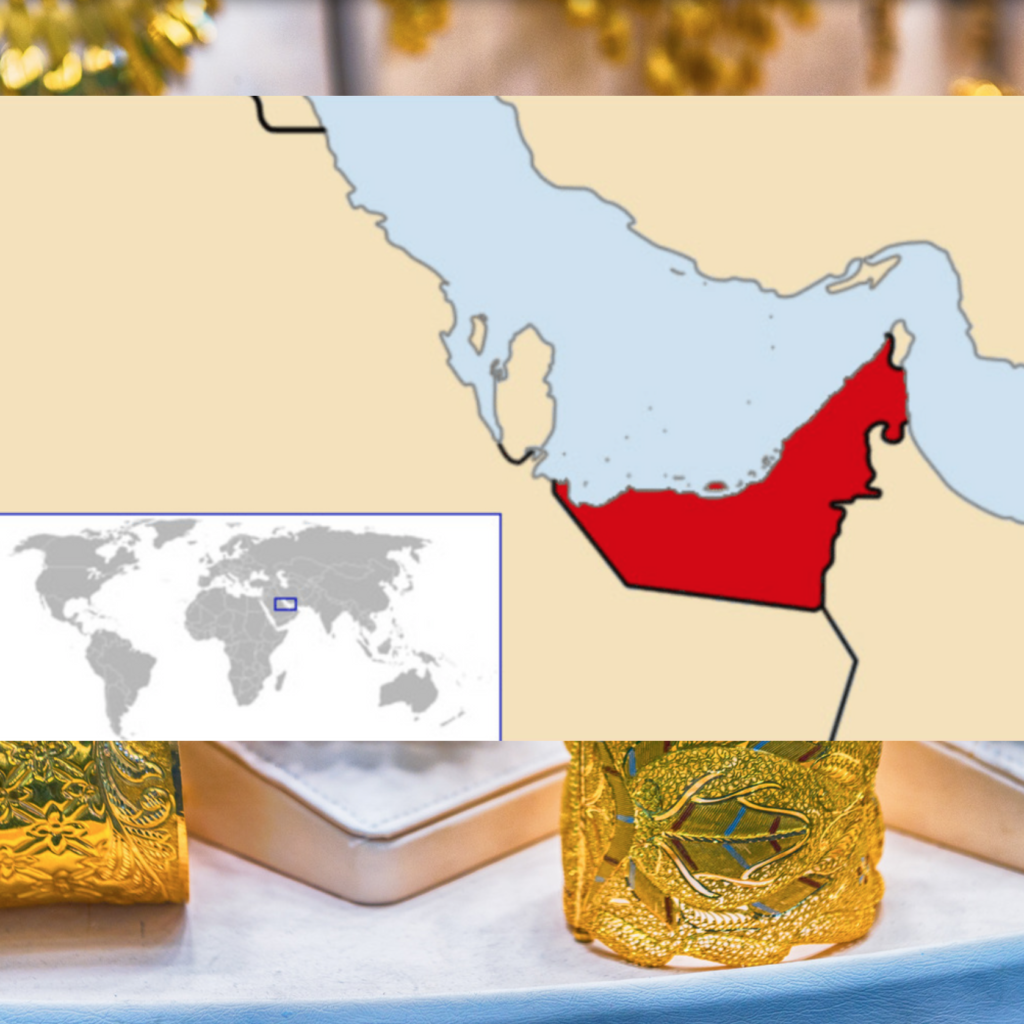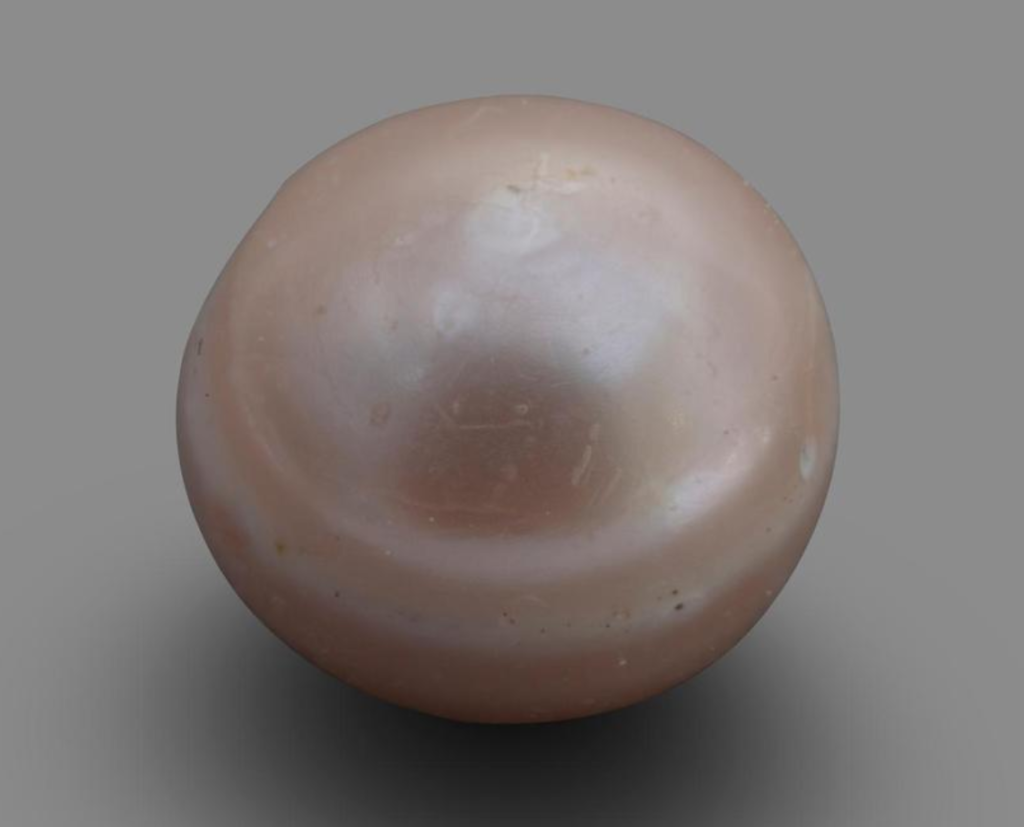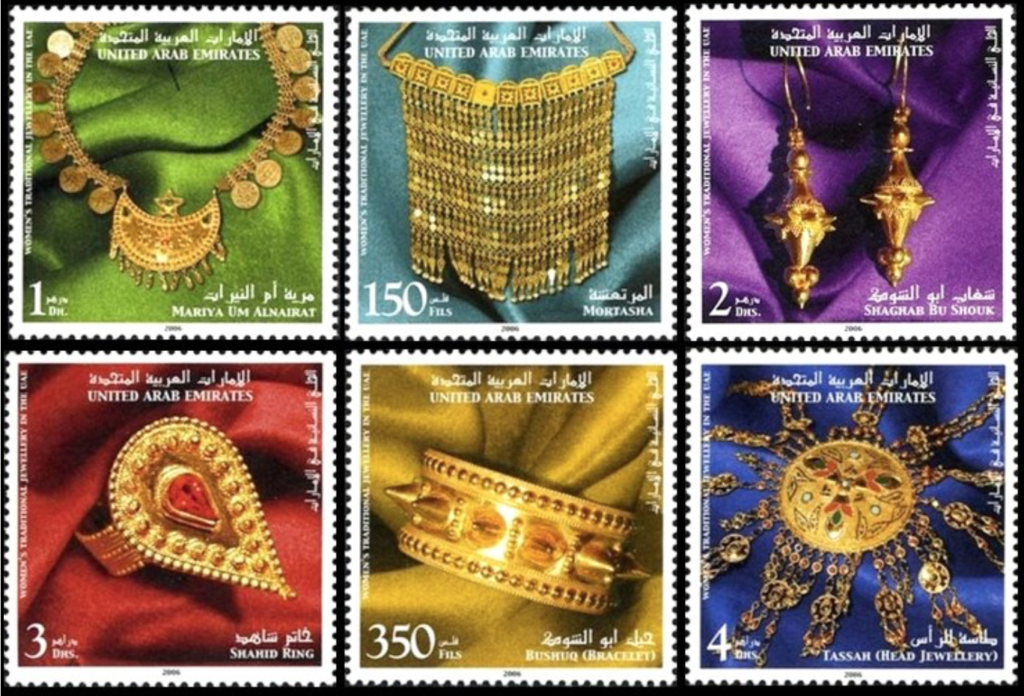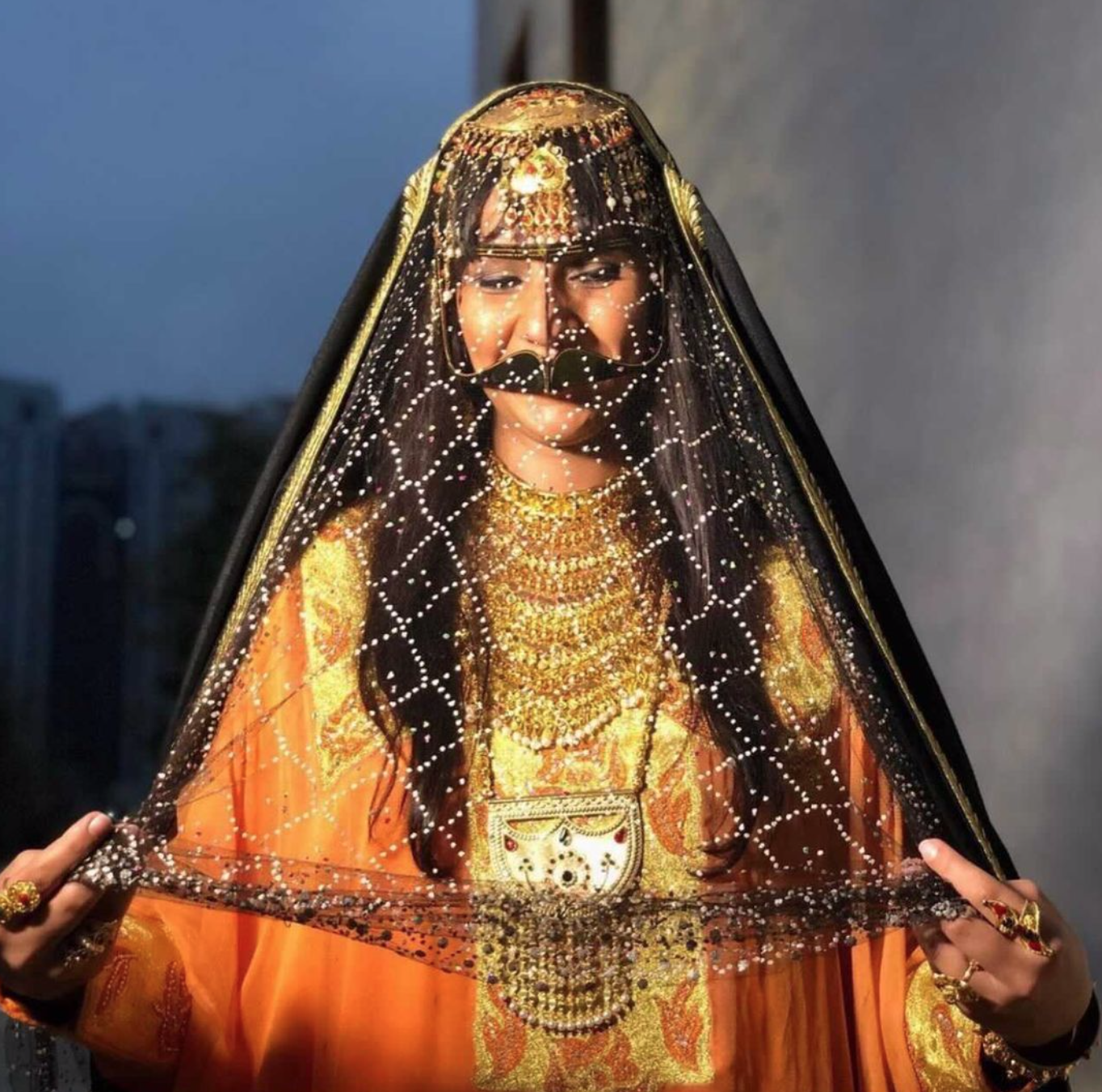In the blog series on jewellery, we will focus on the jewellery traditions of various countries in North Africa and South-West Asia. These jewellery traditions go further back in history than the geographical borders we know today, and of course, one country may be home to several cultural traditions. Both the historical context and the cultural heritage of a variety of peoples are visible in the jewellery worn, and we hope to introduce this wider scope of adornment and dress to you. As The
Zay
Zay: (Arabic: costume, Pl. azyaā’), a set of clothes in a style typical of a particular country or historical period. Initiative is based on The
Sultani
Sulṭānī: (Arabic: sultān: king). In the UAE the term denotes to silk satin fabric in multiple vertical striped colours, commonly used for tunics (kanadir) and underpants (sarāwīl). Also refers to book: Sultani, Traditions Renewed, Changes in women’s traditional dress In the United Arab Emirates during the reign of the late Shaykh Zāyid Bin Sultan āl Nahyān, 1966-2004, By Dr. Reem Tariq
Ṭariq: (Arabic; Synonym: tulle_bi_talli; talli; badla; khus_dozi ), series of small metal knots made on a woven net ground as embellishment. The term is commonly used in the Levant Arab region specifically in Lebanon.
El Mutwalli (2011). Collection, consisting of historical garments from the United Arab Emirates (UAE), we start out in this part of the Arab Peninsula. The location of the UAE on an intersection of maritime trade routes as well as its natural treasures on land and in the sea has resulted in a varied jewellery tradition over the millennia.
 The United Arab Emirates is famous for its gold jewellery Photo: Wikimedia Commons/Canva
The United Arab Emirates is famous for its gold jewellery Photo: Wikimedia Commons/CanvaCarnelian and agate beads
Located on the eastern end of the Arab Peninsula, the Emirates border Oman and Saudi Arabia, as well as Qatar and Iran by sea. The federation is formed by the seven emirates of Abu Dhabi (serving as the capital), Ajman, Dubai, Fujairah, Ra’s Al Khaimah, Sharjah and Umm Al Quwain. In 1971 the UAE joined the Arab League and the United Nations as an independent country. Although the country itself is relatively young, the region has been inhabited as early as prehistoric times. And it is in these prehistoric times that we find the first evidence of jewellery production and trade. The Emirate of Ra’s al-Khaimah is rich in quartzes such as carnelian and agate. Beads of these materials were much prized and have been produced and traded since the Neolithic. It is also through beads that we can catch a glimpse of the vast trading network of the early inhabitants of the UAE. Etched carnelian beads were for example found in Umm an-Nar, al-Sufouh, and Tell Abraq, and date from around 3,000 BCE. These were produced by the Indus civilization in Northwest India and Pakistan and traded to the UAE. This type of beads remained in use up until the early Islamic period: they were rare, and probably highly valued ornaments.
A maritime trade hub in jewellery
During the Bronze Age, around 2,600 to 2,000 BCE, the area was known as the Land of Magan and formed a trade hub where goods from the civilizations of the Indus Valley, but also Iran and Bactria (in current-day Uzbekistan) were traded. Jewellery found on the archaeological site of Ed-Dur, in the Emirate of Umm al-Quwain, testifies further to the wide range of trade contacts. This location flourished from the first century BCE to the second century CE and was a major trade hub in the Gulf, connecting the Roman world of the Mediterranean to India and beyond. Here again, jewellery made of carnelian and agate beads was found, but also a wide
range of materials such as gold, rock crystal, amethyst, bone, glass paste and of course pearls show how the inhabitants of the UAE formed part of an international trade network some 2,000 years ago.
 The oldest pearl in the world, found in Abu Dhabi. Photo: Department of Culture and Tourism, Abu Dhabi
The oldest pearl in the world, found in Abu Dhabi. Photo: Department of Culture and Tourism, Abu DhabiRiches of the sea: the pearl trade
One of the most famous natural resources of the UAE is pearls. Pearls from the Gulf were extremely valued in Antiquity, and recent archaeological excavations off the coast of Abu Dhabi have revealed what may well be the oldest known pearl in the world – it is 8,000 years old! Pearls were worked into earrings in Nineveh (Iraq), a necklace in Susa (Iran), Roman earrings, and much later graced the ornaments worn in Indian and European courts. The pearling centre of Julfar, now absorbed into Ra’s al-Khaimah, was second to Bahrain only and supplied pearls to the Venetian court. It is the first settlements of pearl fishers on the shores of what is now the UAE that formed the onset of cities like Dubai, Sharjah, Ajman, Umm al-Quwain and Ra’s al-Khaimah. The pearl trade formed the main economical factor until the discovery of oil: pearls from the Gulf were in high demand and traded to the ends of the known world.
 Gold Emirati jewellery featured on a series of stamps
Gold Emirati jewellery featured on a series of stampsGold Emirati jewellery
Nowadays, the UAE has its own recognizable style of jewellery. This jewellery reflects the millennia of international trading contacts and the vicinity of both the Arabian and Indian world. The rich cultural diversity of the inhabitants of the UAE has lent its jewellery a unique and distinct style. Influences from Oman as well as Arabian Bedouins are clearly visible, as are the traces of nearby India as well as elements from Ottoman styles. The Indian influences stem from the period when the pearl trade was dominant in the region and all of the resources were directed towards pearling: during this time, Indian traders imported what could not be made locally. Jewellery was one of those categories. One of the oldest still existing sets of heritage jewellery was created by an Indian goldsmith in the 1920’s and contains several of the characteristic elements of Emirati jewellery. The
murtasha is an elaborate choker that sits comfortably around the neck, from which a cascade of gold segments falls onto the chest. Decorated with pearls and
turquoise
Turquoise: (French: turquois – present day Türkiye; Synonyms: firuze
Firuze: (Persian: pērōzah – "victory", later Arabic: fayrūz; Synonyms: firuze, pheroza), is a naturally occurring opaque mineral mined in abundance in Khorasan province of Iran and has been used for making dye for centuries. , pheroza), is a naturally occurring opaque mineral mined in abundance in Khorasan province of Iran and has been used for making dye for centuries. The term is a derivative of the French word for the country Türkiye once called Turkey. , this exquisite necklace-type has evolved into one of the most recognizable elements of Emirati jewellery. The shahid-ring is similar to its silver sibling as worn in Oman: both are worn on the index finger and remind the wearer of her daily prayers. Very particular for the UAE is the necklace called
shnaf
Shnāf: (unknown, synonym: tfruqah
Tfrūqah: (unknown, synonyms: shnaf, tabā’ah, hyar
Hyār: (unkown, synonym:naql
Naql: (unknown, synonyms: hyar, majlah
Majlah: (unknown, synonyms: hyar, naql), decorative golden chain that comes different motifs, similar to a headband worn across connecting ear to ear and ending with small rings where earrings are dangled. At times it has a medallion (shnaf/taba’ah/tfruqah) attached on the forehead or additional dangling chain layers covering the crown of the head. Common to the UAE, Oman, Qatar, and other Arab gulf states.), decorative golden chain that comes different motifs, similar to a headband worn across connecting ear to ear and ending with small rings where earrings are dangled. At times it has a medallion (shnaf/taba’ah/tfruqah) attached on the forehead or additional dangling chain layers covering the crown of the head. Common to the UAE, Oman, Qatar and other Arab gulf states., majlah
Majlah: (unknown, synonyms: hyar, naql), decorative golden chain that comes different motifs, similar to a headband worn across connecting ear to ear and ending with small rings where earrings are dangled. At times it has a medallion (shnaf/taba’ah/tfruqah) attached on the forehead or additional dangling chain layers covering the crown of the head. Common to the UAE, Oman, Qatar, and other Arab gulf states.), decorative golden chain that comes in different motifs, similar to a headband worn across connecting ear to ear and ending with small rings for earrings to dangle. At times it has a medallion (shnaf/taba’ah/tfruqah) attached on the forehead or additional dangling chain layers covering the crown of the head. Common to the UAE, Oman, Qatar, and other Arab gulf states., hlali), generally triangular or crescent shape medallion worn dangling on the forehead or as part of a longer necklace (mriyah_um_shnaf), common to the UAE, Oman, Qatar, and other Arab gulf states., tabā’ah, hyar
Hyār: (unkown, synonym:naql
Naql: (unknown, synonyms: hyar, majlah
Majlah: (unknown, synonyms: hyar, naql), decorative golden chain that comes different motifs, similar to a headband worn across connecting ear to ear and ending with small rings where earrings are dangled. At times it has a medallion (shnaf/taba’ah/tfruqah) attached on the forehead or additional dangling chain layers covering the crown of the head. Common to the UAE, Oman, Qatar, and other Arab gulf states.), decorative golden chain that comes different motifs, similar to a headband worn across connecting ear to ear and ending with small rings where earrings are dangled. At times it has a medallion (shnaf/taba’ah/tfruqah) attached on the forehead or additional dangling chain layers covering the crown of the head. Common to the UAE, Oman, Qatar and other Arab gulf states., majlah
Majlah: (unknown, synonyms: hyar, naql), decorative golden chain that comes different motifs, similar to a headband worn across connecting ear to ear and ending with small rings where earrings are dangled. At times it has a medallion (shnaf/taba’ah/tfruqah) attached on the forehead or additional dangling chain layers covering the crown of the head. Common to the UAE, Oman, Qatar, and other Arab gulf states.), decorative golden chain that comes in different motifs, similar to a headband worn across connecting ear to ear and ending with small rings for earrings to dangle. At times it has a medallion (shnaf/taba’ah/tfruqah) attached on the forehead or additional dangling chain layers covering the crown of the head. Common to the UAE, Oman, Qatar, and other Arab gulf states., hlali) generally triangular or crescent shape medallion worn dangling on the forehead or as part of a longer necklace (mriyah_um_shnaf), common to the UAE, Oman, Qatar, and other Arab gulf states.: a crescent-shaped ornament on a long chain. Influences from the Ottoman styles are visible in the head ornament called
tassah, a gold disc with several pendants. Gold bracelets and head ornaments reflect the jewellery styles of nearby Oman. All of these are still worn with pride on festive occasions such as a marriage, but they also continue to inspire modern jewellery designers. The result is a contemporary jewellery style, breathing the Emirati identity, and rooted deep in history.
This blogpost is based on
- Charpentier et. Al. 2017. Carnelian, agate and other types of chalcedony: the prehistory of Jebel al-Ma’taradh and its semi-precious stones, Emirat of Ra’s al-Khaimah, in: Arabian Archaeology and Epigraphy 28, pp. 175-189
- De Waele, A. & E. Haerinck, 2006. Etched (carnelian) beads from northeast and southeast Arabia, in: Arabian Archaeology and Epigraphy 17, pp. 31-40
- De Waele, A. 2007. The beads of ed-Dur, in: Proccedings of the Seminar for Arabian Studies, Vol. 37, pp. 297-308
- Daleur, G. 2019. Holistic Sustainability Policies: Preserving Local Cultural Identity in the UAE in the Face of Globalism, in: Indian Journal of Public Administration, 65 (3), pp. 749 - 768
Website links





 The United Arab Emirates is famous for its gold jewellery Photo: Wikimedia Commons/Canva
The United Arab Emirates is famous for its gold jewellery Photo: Wikimedia Commons/Canva The oldest pearl in the world, found in Abu Dhabi. Photo: Department of Culture and Tourism, Abu Dhabi
The oldest pearl in the world, found in Abu Dhabi. Photo: Department of Culture and Tourism, Abu Dhabi Gold Emirati jewellery featured on a series of stamps
Gold Emirati jewellery featured on a series of stamps